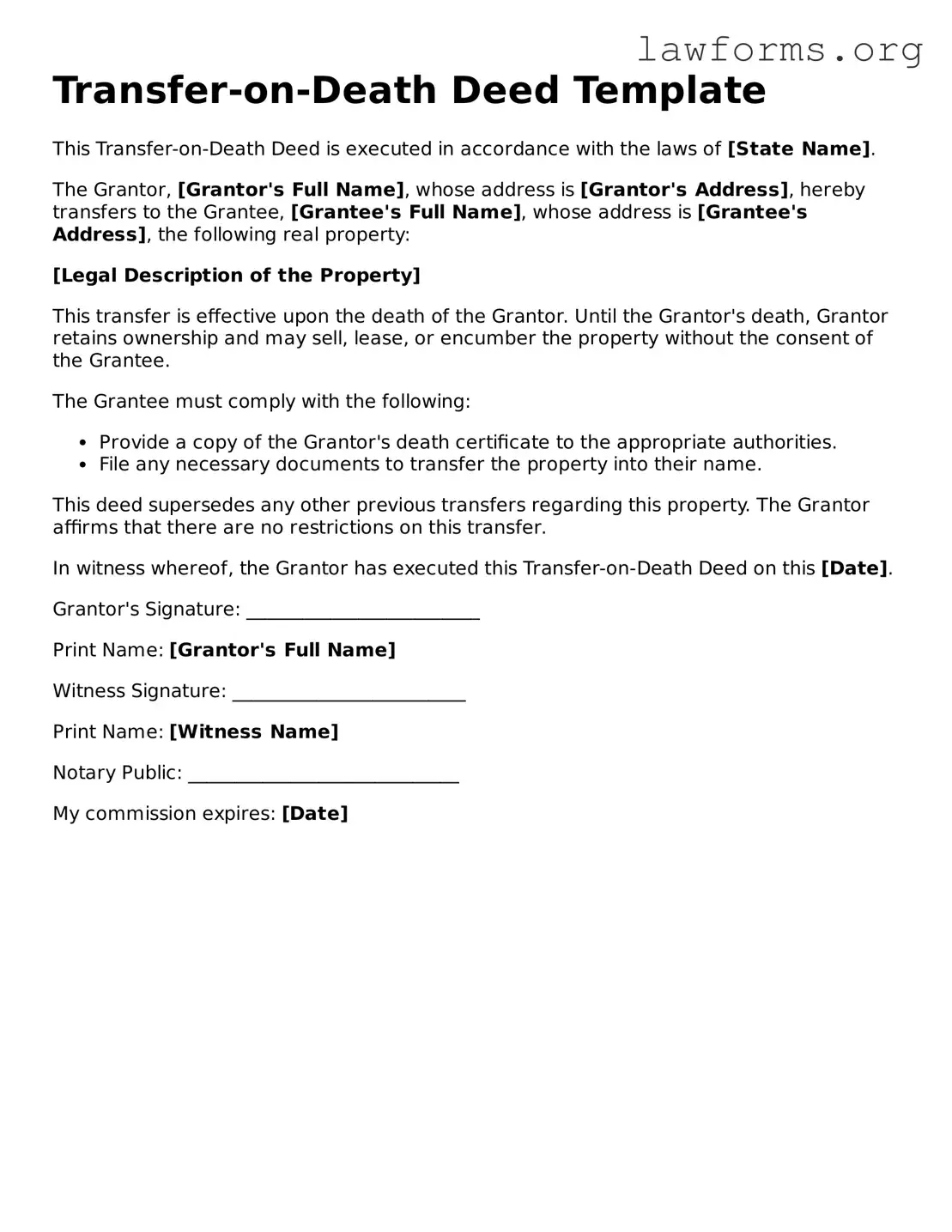Transfer-on-Death Deed Template
This Transfer-on-Death Deed is executed in accordance with the laws of [State Name].
The Grantor, [Grantor's Full Name], whose address is [Grantor's Address], hereby transfers to the Grantee, [Grantee's Full Name], whose address is [Grantee's Address], the following real property:
[Legal Description of the Property]
This transfer is effective upon the death of the Grantor. Until the Grantor's death, Grantor retains ownership and may sell, lease, or encumber the property without the consent of the Grantee.
The Grantee must comply with the following:
- Provide a copy of the Grantor's death certificate to the appropriate authorities.
- File any necessary documents to transfer the property into their name.
This deed supersedes any other previous transfers regarding this property. The Grantor affirms that there are no restrictions on this transfer.
In witness whereof, the Grantor has executed this Transfer-on-Death Deed on this [Date].
Grantor's Signature: _________________________
Print Name: [Grantor's Full Name]
Witness Signature: _________________________
Print Name: [Witness Name]
Notary Public: _____________________________
My commission expires: [Date]
